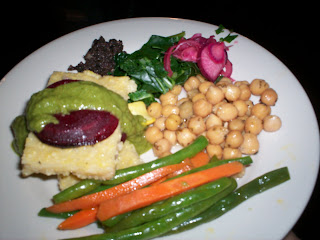If you're unconvinced about the power of zest, think back to the last time someone peeled an orange around you. You could smell the rich, light, almost floral scent of the orange, possibly before you even saw the fruit. Or maybe it's been a while, and you need a refresher. If that's the case, pick up an orange the next time you see one and lightly scrape the peel. First, you'll see bursts of oil explode from the surface of the orange, then you'll be surrounded by the strong aroma.
Using a traditional zester is a great way to get beautiful long strands of zest which are perfect for garnishes or making candied zest, however, if you 're adding the zest to recipes, Microplane zesters are an invaluable tool.
 Since the Microplane Zester is so sharp, you need only lightly run it over the surface of a clean, organic citrus fruit. You're aiming to remove only the brightest part of the skin. I've seen some people go back and forth over the same spot, but that is unnecessary and if you do that, you may end up with bitter, pithy zest.
Since the Microplane Zester is so sharp, you need only lightly run it over the surface of a clean, organic citrus fruit. You're aiming to remove only the brightest part of the skin. I've seen some people go back and forth over the same spot, but that is unnecessary and if you do that, you may end up with bitter, pithy zest.
 At the Natural Epicurean, we have a great tip for keeping fresh zest on hand all year long. The two tools that make this possible are a Microplane zester and a glass jar with an air-tight seal (old baby food jars are perfect for this). We zest all organic citrus fruits that cross our paths, and any time we have zest left over, we simply place it in the glass jar and freeze it immediately. We often have at least three separeate jars for lime zest, lemon zest and orange zest, respectively. If you often have organic grapefruits, blood oranges, tangerines, citron, etc. you can make separate jars for each of those, but make sure to lable them. The most important steps for making sure your zest stays fresh is to keep the jars in the coldest part of your freezer(not the door), make sure the lid is always closed securely, and only take the jar out long enough to remove the amount of zest you need. These steps all go hand in hand to keep your zest from thawing or getting freezer burn. If your zest does get freezer burn, wash out the jar and start again.
At the Natural Epicurean, we have a great tip for keeping fresh zest on hand all year long. The two tools that make this possible are a Microplane zester and a glass jar with an air-tight seal (old baby food jars are perfect for this). We zest all organic citrus fruits that cross our paths, and any time we have zest left over, we simply place it in the glass jar and freeze it immediately. We often have at least three separeate jars for lime zest, lemon zest and orange zest, respectively. If you often have organic grapefruits, blood oranges, tangerines, citron, etc. you can make separate jars for each of those, but make sure to lable them. The most important steps for making sure your zest stays fresh is to keep the jars in the coldest part of your freezer(not the door), make sure the lid is always closed securely, and only take the jar out long enough to remove the amount of zest you need. These steps all go hand in hand to keep your zest from thawing or getting freezer burn. If your zest does get freezer burn, wash out the jar and start again.






